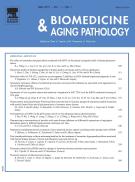CXCL10 release in cardiopulmonary bypass: An in vivo and in vitro study - 20/12/12

Abstract |
Cardiopulmonary bypass (CPB) leads to systemic and cardiac inflammation. Although the intraoperative blood measurement of some inflammatory cytokines has been recognized as an useful tool in clinical setting, postoperative management still represents a major problem; hence, knowledge about additional possible mediator(s) in time of this process would potentially turn in a clinical benefit. CXCL10 has been shown to be involved in cardiac immune-inflammatory processes. Herein, we aimed to investigate whether and how this chemokine could be a possible early mediator and indicator of inflammation development during CPB. Since cardiac, endothelial and immune cells are all sources of CXCL10, our purpose was also to investigate in vitro CXCL10 secretion pattern in time by those cell types. In thirteen patients undergoing CPB, CXCL10, CXCL9, IL-6, IL-8 and IL-10 have been measured by Elisa in serum withdrawn at eight different perioperative times. Sera from healthy subjects have been tested for comparison. The same cytokines have been measured by Elisa in time-course experiments onto human isolated cardiomyocytes, endothelial and CD4+T cells under inflammatory stimuli. TaqMan Real-Time RT-PCR and immunocytochemistry were used for endothelial cell characterization. CXCL10 level was higher in CPB patients before surgery as compared to healthy subjects; CXCL10 level raises earliest in serum of CPB patients and in isolated cardiomyocytes under inflammatory stimuli as compared to other cytokines. CXCL10 might represent a critical early factor in mediating systemic and local cardiac inflammatory response in subjects undergoing CPB, offering opportunity for future monitoring or therapeutic interventions.
El texto completo de este artículo está disponible en PDF.Keywords : CXCL10, SIRS, CPB
Esquema
Vol 2 - N° 4
P. 187-194 - octobre 2012 Regresar al númeroBienvenido a EM-consulte, la referencia de los profesionales de la salud.
El acceso al texto completo de este artículo requiere una suscripción.
¿Ya suscrito a @@106933@@ revista ?

